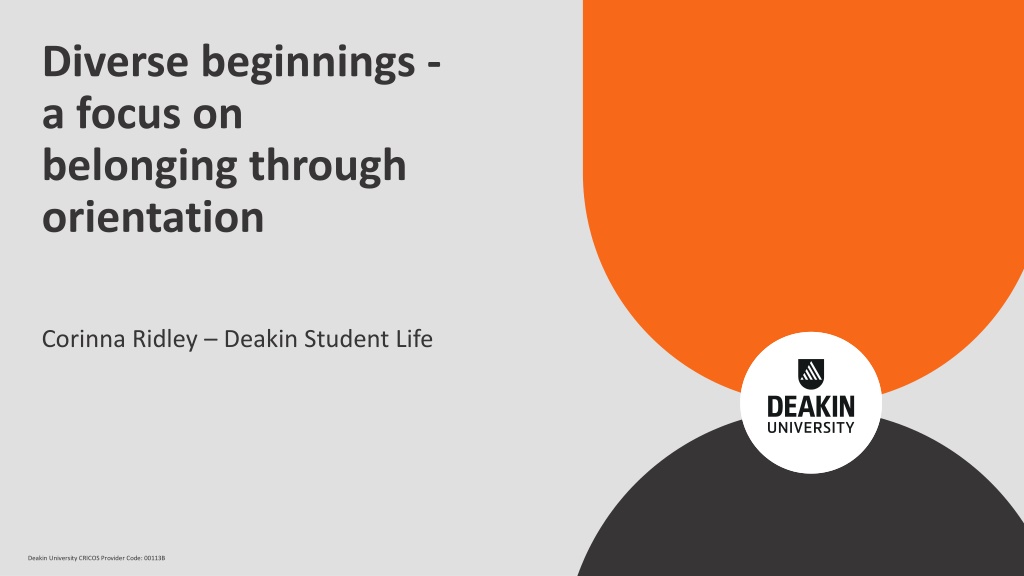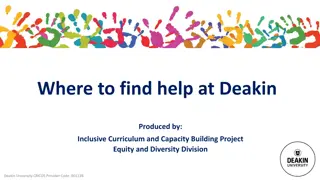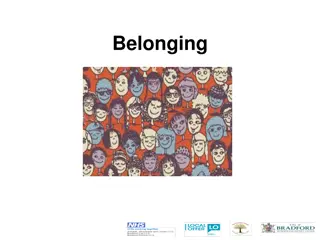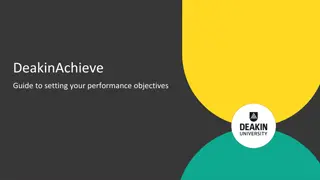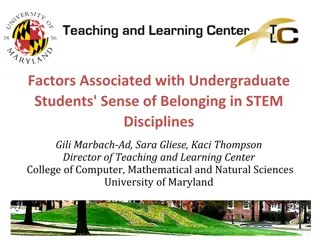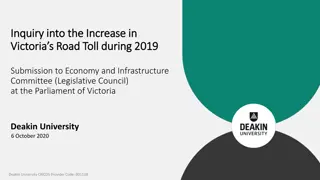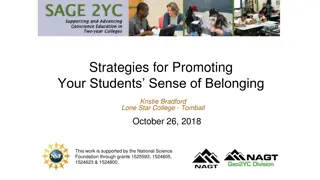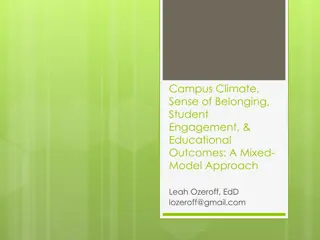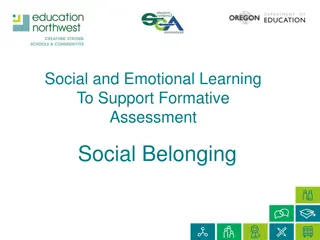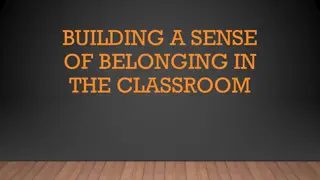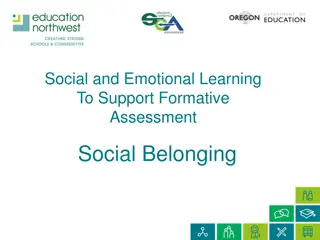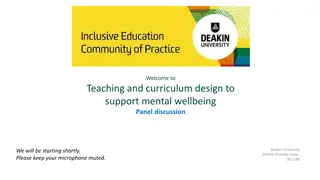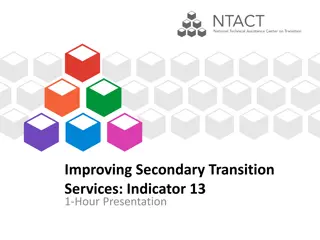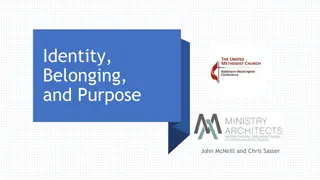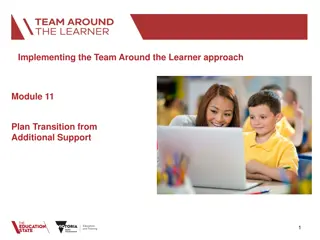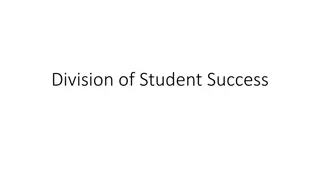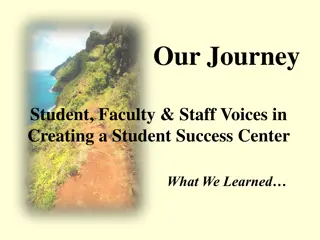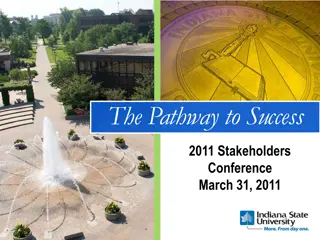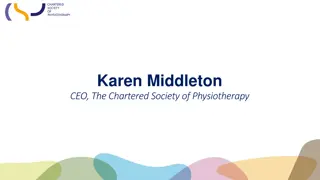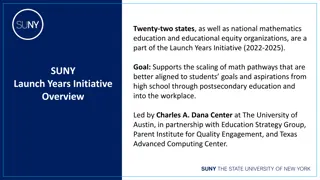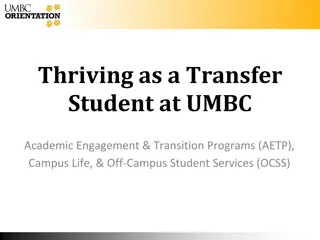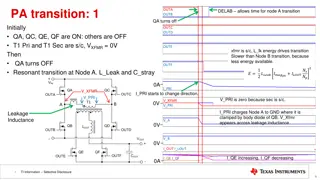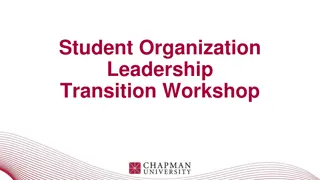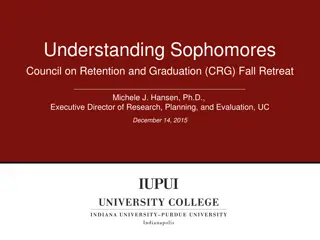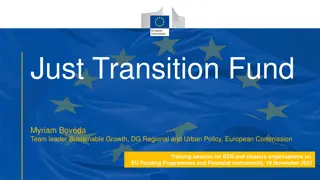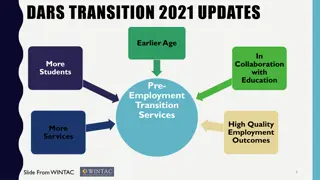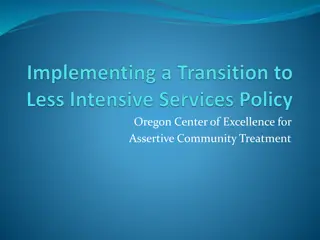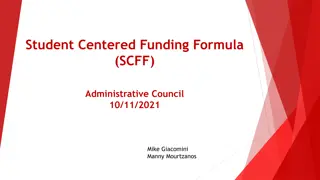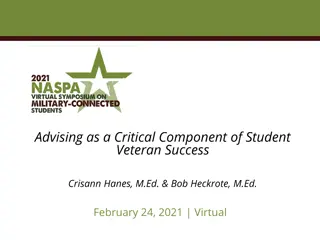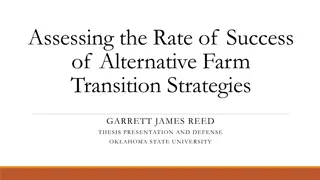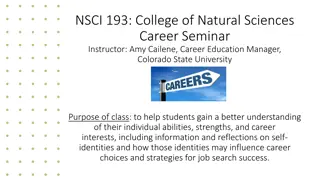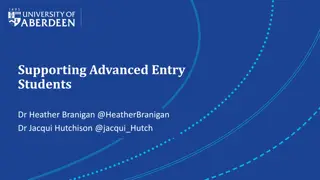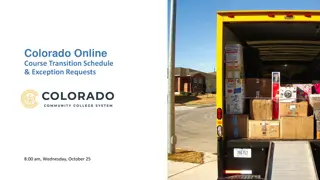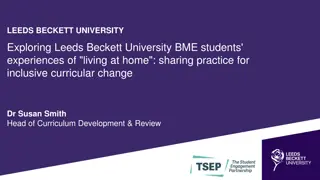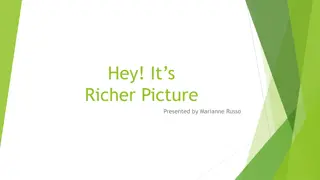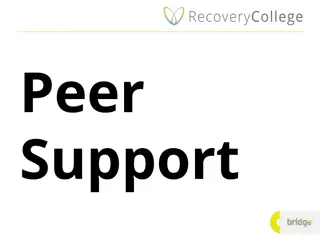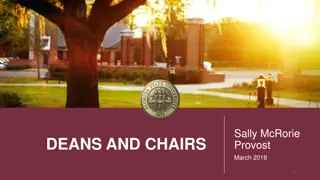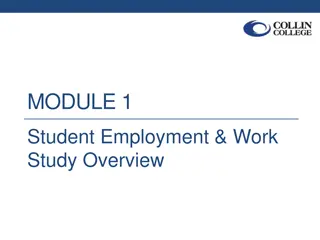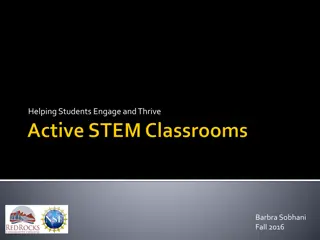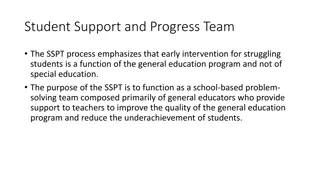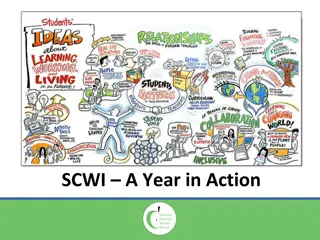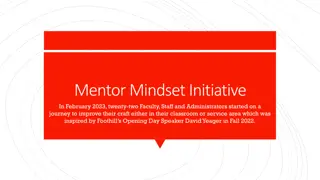Understanding Student Transition: Focus on Belonging and Success at Deakin University
The content discusses the importance of effective orientation and transition strategies for students starting at Deakin University. It highlights diverse beginnings, student characteristics, challenges, and the Five Senses of Success model by Lizzio. The focus is on creating a sense of belonging and supporting students in their early weeks at university.
Download Presentation

Please find below an Image/Link to download the presentation.
The content on the website is provided AS IS for your information and personal use only. It may not be sold, licensed, or shared on other websites without obtaining consent from the author. Download presentation by click this link. If you encounter any issues during the download, it is possible that the publisher has removed the file from their server.
E N D
Presentation Transcript
Diverse beginnings - a focus on belonging through orientation Corinna Ridley Deakin Student Life Deakin University CRICOS Provider Code: 00113B
What we know about our commencing cohort . Differences in learning preferences Differences in mindset Demographic differences Enthusiastic, confident Apprehensive, anxious school leaver mature age local International ATAR low SES first in family Differences in background knowledge Intrinsically motivated Extrinsically motivated Differences in previous learning culture and experience Deakin University CRICOS Provider Code: 00113B
Getting Started at Deakin Survey 2017 Deakin University CRICOS Provider Code: 00113B
Expect the unexpected.. Deakin University CRICOS Provider Code: 00113B
The Lizzio model - Griffiths University 2006 It is clear that there isn t one right way to design an orientation and transition strategy. Similarly, there aren t any guaranteed solutions or magic bullets that will impact on student retention or engagement. A reading of the available literature does however indicate that there are consistent needs and concerns that students experience as they commence university. Understanding these needs provides a sound basis for designing effective orientation and transition strategies. (1: 2006) Deakin University CRICOS Provider Code: 00113B
The Five Senses of Success (Lizzio 2006) Sense of Capability Sense of Connectedness Sense of Academic Culture . Sense of Purpose Sense of Resourcefulness Deakin University CRICOS Provider Code: 00113B
The challenge How do we provide opportunities for students to reflect on and develop across all 5 senses during their early weeks at university in ways that acknowledge individual differences? Deakin University CRICOS Provider Code: 00113B
UniStart Sense of capability o Assumes student is new to university o Assumes some students know more than others o Assumes some students are more confident than others o Assumes you don t know what you might need to know Self paced Self directed Deakin University CRICOS Provider Code: 00113B
Prepare to Succeed An orientation program for Post Graduate students who could be: o Recent Deakin students o New to Deakin o Recently completed a degree/completed a degree 5+ years ago o Completed a degree in Australia/overseas o Working full time/part time in related profession Working full time/part time in an unrelated profession o Deakin University CRICOS Provider Code: 00113B
Building Student Engagement and Belonging in Higher Education at a time of change Liz Thomas 2012 At the individual level belonging recognises students subjective feelings of relatedness or connectedness to the institution. .It may relate the extent to which students feel personally accepted, Bourdieu and Passeron s (1977) theories of cultural capital and habitus view the problem structurally, as being embedded in the way that higher education institutions function. Educational institutions have an identifiable habitus (Reay, David and Ball, 2001), which incorporates practices that mutually shape and reshape the institutions with their students, their communities and the wider socio-economic cultures of their catchment areas (Reay, David and Ball, 2001, para 1.3). Students whose habitus is at odds with that of their higher education institution may feel that they do not fit in, that their social and cultural practices are inappropriate and that their tacit knowledge is undervalued, and they may be more inclined to withdraw early (Thomas, 2002). ( 13:2006) Belonging may be characterised by regular contact and the perception that interpersonal relationships have stability, affective concern, and are ongoing (Baumeister and Leary, 1995). Thus interpersonal relations are essential for satisfying the need to belong. (12:2006) Deakin University CRICOS Provider Code: 00113B
So what works? Effective interventions start pre- entry, and have an emphasis on engagement and an overt academic purpose. They develop peer networks and friendships, create links with academic members of staff, provide key information, shape realistic expectations, improve academic skills, develop students confidence, demonstrate future relevance and nurture belonging.(15: 2006) Deakin University CRICOS Provider Code: 00113B
The Success Coach Program for commencing UG Cloud students Aims to: build sense of connectedness, capability and resourcefulness increase engagement and sense of belonging Assist students to navigate the online learning landscape Deakin University CRICOS Provider Code: 00113B
Who are success coaches? Success coaches are experienced later years students from the same or similar discipline Success coaches email all students in the group every week from 2 weeks before O week to week 8 Invite questions/queries/ comments from students Respond to questions/queries/ comments by email and/or phone or skype Deakin University CRICOS Provider Code: 00113B
A key premise of the program is that the student and coach can relate as peers, share common experiences, and the more experienced student can help break down barriers to seeking help, connecting the new student with university supports and with peers.
Mentoring essentials? The advantages and challenges of the online environment Guest (2000) argued that mentoring is a long-term process, involves sharing experiences and offering encouragement, provides the mentee (prot g ) with a way of developing insight through reflection, and is a two-way relationship that results in mutual learning. Peer mentoring a two way relationship is central Email a one way communication model ? Peer mentoring - not just giving advice ? Guest 2000 cited in Shrestha et al (2009: 116)
Success coach data - 2018 TrimesterTotal in cohort Total contacting coach at least once Most active wks for student contact Popular links* o 945 @ wk 2 o 1431 @ wk 1 o 1646 @ wk 4 o 1469 @ wk 8 o Staying motivated blog (184) o Cloud communities group (146) o UniStart (121) T1 2018 519 35% of final cohort 31% of max cohort Wk 1 (190) Wk 2 (156) 0 2 (132) o 434 @ wk -2 o 570 @wk1 o 916 @ wk3 o 785 @wk 8 o Orientation itinerary (110) o Assignment planner (61) o UniStart (55) T2 2018 234 30% of final cohort 25% of max cohort 0-2 ( 71) Wk 1( 70) Wk 3 (59) Deakin University CRICOS Provider Code: 00113B
Other initiatives Unified orientation project what messages do all students need? Which channels are best for that communication? Customised orientation for HDR students, pathway students, International students, Cloud students Personalised orientation itinerary
Whats next ? Transition toolkit to assist academic staff to embed activities that build students sense of capability into early units of study. Success coaches for other cohorts ? Graduate Certificate in Humanitatirun Leadership Deakin Accelerate students
References Lizzio, A. (2006). Designing an orientation and transition strategy for commencing students. Retrieved from http://www.griffith.edu.au/__data/assets/pdf_file/0008/51875/Alfs-5-Senors- Paper-FYEProject E. Thomas ( 2012) Building student engagement and belonging in Higher Education at a time of change: final report from the What Works? Student Retention & Success - Higher Education Academy Shrestha, Celayne Heaton; May, Steve; Edirisingha, Palitha; Burke, Linda; Linsey, Tim ( 2009) From Face-to-Face to e-Mentoring: Does the "e" Add Any Value for Mentors? International Journal of Teaching and Learning in Higher Education, v20 n2 p116-124 2009
